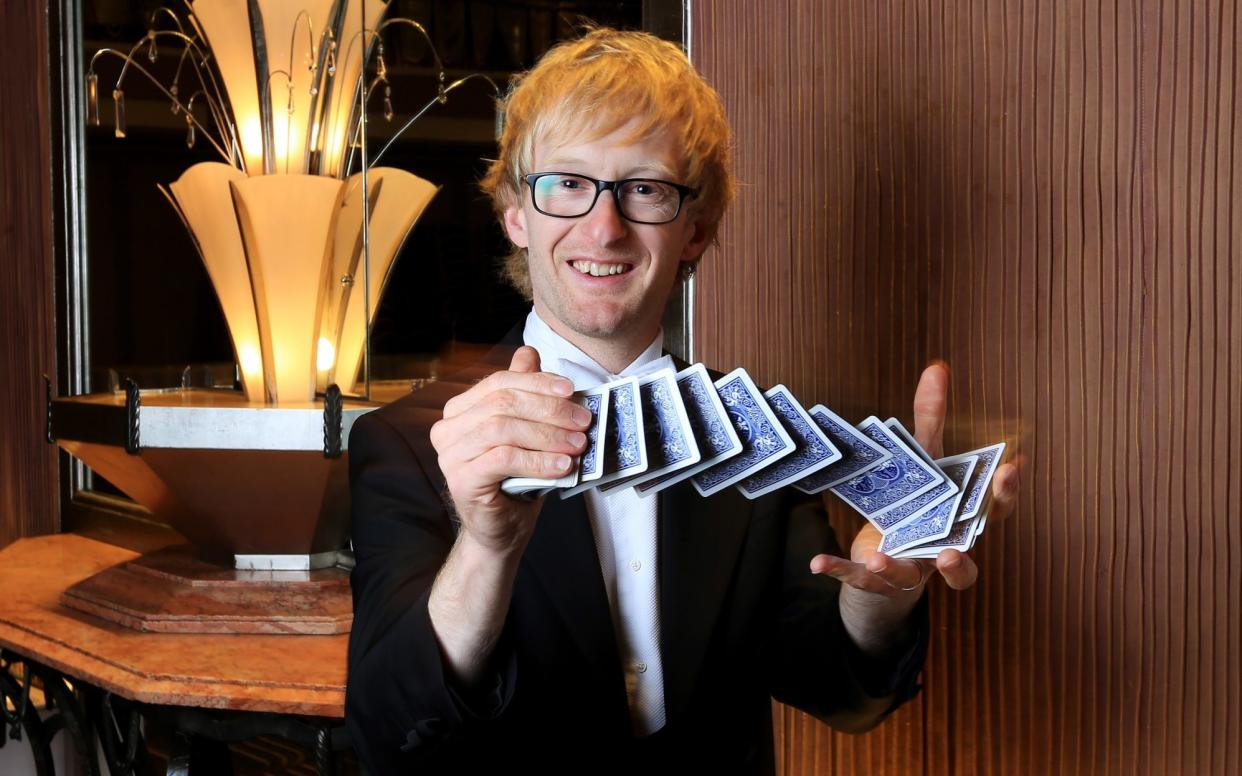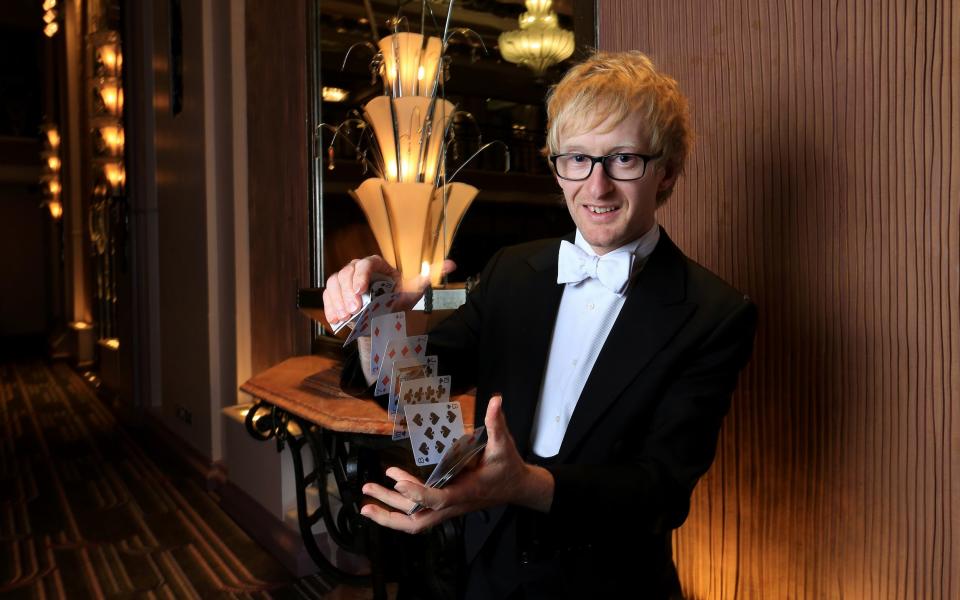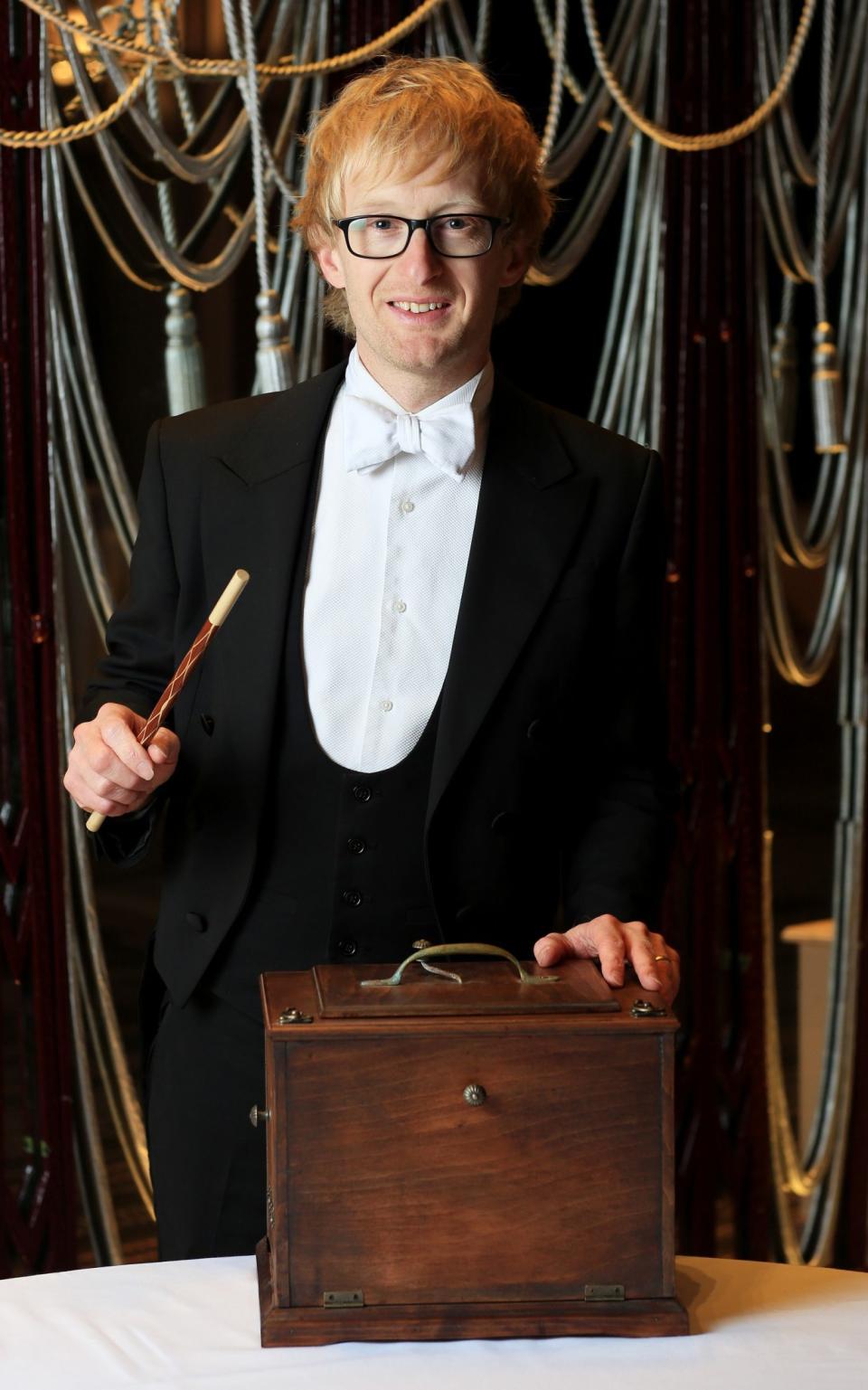Three magic tricks for the ultimate faux-casual flourish

Along with Scalextric parts left strewn on the carpet and a chemistry set that involves leaving something to go off behind the radiator, a magic set gathering dust is a Christmas present rite of passage.
Harry Potter was a mere twinkle in JK Rowling’s eye when I opened my own (or possibly my brother’s) and dabbled with the cup-and-ball trick a few times, tapped the wand, then moved on to something a bit more instantly gratifying.
It’s a gift suited to the kind of child who understands that the word magic is a bit misleading. Far from instantaneous to master, it takes study and application.
My husband was one of those children. He actually read the magic-set manual and practised the tricks. It’s always been a source of great amusement to me that he used to force his parents to watch him give magic shows, assisted by his two younger, biddable siblings. But then, he thinks it’s tragically uncool that I can tap dance.
That youthful magician may have grown up and forgotten his secrets, but he still has one excellent card trick that can wow a room: managing to find your seemingly randomly chosen card no matter how many shuffles of the pack one does. I have to concede it’s a great skill to have. Just one, very good, gasp-inducing trick.
Which is why I’m wheedling a few secrets out of magician Tony Middleton – hopefully I’ll come away with something to show my husband, formerly known as the nine-year-old magician Magibanco.
Middleton (stage name Sonic) is the resident magician at the Sheraton Grand Park Lane, where he hosts a weekly show called The Magic Hour. When we meet in the glitzy lobby, he’s in full tails and white bow. Dynamo (real name Steven Frayne) and David Blaine may have rewritten the rules of magicking so that you can look like an ordinary bloke in a hoodie, but if you see a man in a waistcoat at 10am, chances are he’s a magician.

My excitement is quickly subdued, though, when Middleton informs me that he’s heard from the Magic Circle and they have vetoed his teaching me a trick and revealing it to you all. I wonder how many bunches of flowers pulled from top hats I’d have to give him to change his mind, but the fear of the Magic Circle is very real.
“Penn and Teller weren’t taken into the Magic Circle because they’ve shared secrets – but they don’t even care because they’re massive,” he sighs. “For them it’s probably useful publicity.”
Less so for Middleton.
The only trick they will agree to his showing me “is a bit corny”. The wobbly pencil.
Middleton taps a pencil on the table to show it’s solid, then holding it between his thumb and forefinger he gives it a waggle, and lo, it is floppy.
A special prop, perhaps? No, it’s all in the loose waggling technique that creates an optical illusion. It is, I concede, rather lame.
And so, I stop pestering him and agree to actually learn a skill.
But first, a trick of his own design, inspired by the seances that were popular at the tail end of the 19th century.
Middleton reveals a “spirit cabinet”, famed for their trickery and concealment. First he magics a ball into a sherry glass. Then he makes the “spirit” appear, a skull suddenly dominates the centre of the cabinet. It’s a trick that he put together with his magic prop builder. Although the ball into the sherry glass is an old trick.

“Some of the best tricks invented back in the early 1900s are still being used today, because they’re very effective and they work. Obviously technology has moved on so magicians have fun and new ways to do things as well.”
Unless I get my own Jonathan Creek to build it, I’m hardly going to be pulling this off over Twixmas. His speciality is parlour magic. Not close-up and not stage, but somewhere between the two.
“The most effective type of magic to experience is close-up,” explains Middleton. “People like to experience a bit of wonder.”
Whereas with stage shows, he says, the audience always ends up thinking there was probably a mirror or a trap door at work.
Earlier this year I saw Derren Brown’s show and was stupefied along with the rest of the audience. A credulous colleague, well known to readers of the Telegraph, who shall remain nameless and with his dignity intact, actually thought the only logical answer was that the whole theatre had been put to sleep for 10 minutes. Nonsense, I thought, and proceeded to find a Reddit thread that discussed how it was really done.
The internet has obviously taken some of the magic away.
When Middleton started, though, there weren’t any YouTube tutorials. “You had to go to the library and try to find books on party games and see if they had a chapter on magic. Eventually you find out there are magic shops where you can buy a trick.”
The first trick Middleton bought was on a family holiday in Las Vegas when he was 11 years old.
“I saw them do a trick that completely blew my mind. And then they said it cost $11 to find out how it was done. I paid my money and all I got was a piece of paper with the instructions on it.”
Buying secrets is standard because it helps maintain secrets. “And secrets are important for magicians, because without them there’s no magic.”
As his magical powers grew, and his piggy bank dwindled, he found an older magician to mentor him; now, he has become one himself.
“If someone shows they are dedicated to learning, then over time you will gradually feed them information and help them on their way. It’s important the next generation is helped because being a magician is a very strange career path. You can’t go and get a BA in magic, it doesn’t exist. So it’s important that the master teaches the student and they keep that knowledge going for future generations,” he explains.
Which brings me to the actual “tricks” Middleton is going to teach me: card flourishes. The kind of snazzy fans, cuts and shuffles that provide a classy tee-up to the trick’s big denouement. Turns out they are a time-intensive, steeply curved skill to learn. Middleton is actually delighted that I can’t do any of them. “It shows there’s some skill involved. It gives the craft some credit, rather than it just being a simple trick that we don’t know what it is until it’s revealed.”
The Charlier cut in particular – which involves flipping segments of the deck with one hand – looks rather neat. Very Bond villain-esque. It’s the sort of faux-casual flourish one might break out over Christmas pudding and brandy, or a New Year’s Eve soiree.
There’s still some time to practise… I’ll certainly look a darn sight cooler than I would wobbling a pencil.
Take a pack of cards and split it in half.
“Start with your fingers on the outside and your thumbs on the inside. Take your forefinger and put it on the middle of the long edge of the cards; now you’ll find you can bend the two packets. What you’re going to do is interweave the two corners.
Push it so they are a little bit closer together. Put your thumbs on the back, take your forefinger, put it underneath and squeeze with your fingers underneath.
Squeeze the top and bottom of the pack in the palm of your hand. Now if I open my fingers underneath slowly, you’ll find the cards will release.”
“This is a one-handed cut. You start with the pack in your hand quite high up.
Forefinger and little finger on the short edges, middle finger and ring finger on the bottom long edge and thumb on the top long edge, making a basket with your hand.
You drop a portion of the cards down by releasing pressure with your thumb very slightly.
About half the cards will fall from your hands. Put your forefinger underneath the dropped deck and push. When you get to this point you just open these fingers very slowly so it hops over, and then you can close it like a book.
Drop, push, open and close. And that makes the Charlier cut.”
“Also known as ‘springing the cards’, this is a skill you’ll have to practise, but the way to do it is to start small and build up to something bigger.
What you’re essentially doing is running the cards off the end of your finger tips.
I’m going to place the cards in the palm of my hand. So I’ve got the bottom into the heel and the fingers are on the top of the deck. I’m going to pull back my fingers very slowly and I’m going to use my other hand like a basket to catch all the cards.
Buckle the cards nice and firmly and very gradually pull your fingers back to allow the cards to slip up.
When you can do that smoothly you can start to open your hands very slowly and increase the distance. And finally you can get the full effect.”

